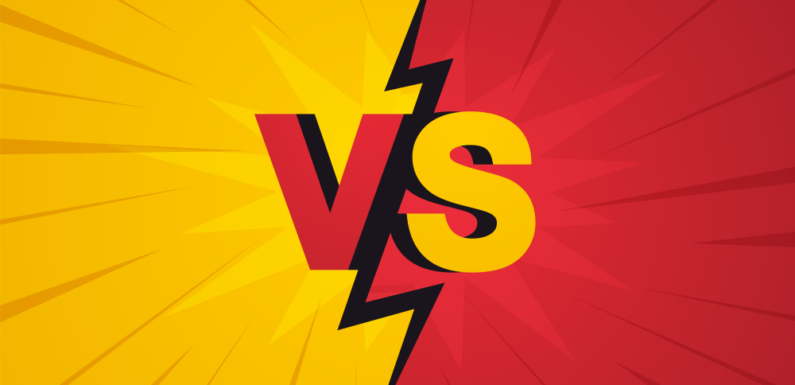
Picking between the different Java application servers can be a test for developers who are new to creating on the web Java applications and Java-based locales. The two most demanding servers are Tomcat and JBoss.
Both are are the brilliant platforms after that create and convey applications. However, they have distinctive qualities.
Making one wrong decision can bring about more work than would generally be appropriate, so we will slice through the confusion with a quick guide to which application server will best suit your necessities.
In 2013, JBoss got a name change and is currently known as WildFly. However, the old name is still generally utilised, mainly by those using the more seasoned forms. Thus, we’ll stick to calling it JBoss for the occasion.
What is JBoss?
Created by JBoss – part of Red Hat Inc. – the JBoss Application server goes about as an open-source other option to arrangements, for example, IBM WebSphere and SAP NetWeaver. It predominantly depends upon Sun Microsystems’ Enterprise JavaBeans API for functionality. Like most frameworks created on EJB, it is intended to enable developers to centre primarily around the business architecture of the server, as opposed to getting impeded in pointless programming and coding to associate the distinctive working parts.
Notwithstanding giving JBoss and all its related middleware for nothing out of pocket, Redcap operates a Developer Program that enables endorsers of increase guide access to select content and item engaged gatherings. This program, as well, is accessible complementary and exists primarily to drive JBoss advancement and cultivate a positive engineer community. Developers are urged to take an interest on the official sheets, contributing code and reporting issues wherever they manifest.
Lightweight and cloud-accommodating, JBoss is sufficiently capable for use in the enterprise and highlights a middleware portfolio to help quicken application advancement, organisation, execution, data integration, and automation. The JBoss site highlights excellent engineer materials, instructional classes, and institutional archives for both new and veteran devs.
What is Tomcat?
Regularly alluded to as “Apache Tomcat,” Tomcat isn’t an application server – This creates some confusion among beginners, as ‘application server’ and ‘web server’ are very frequently used terms.
Or maybe, Tomcat is to a higher degree a web server and web container. This does not mean it has lack of functionality. An open-source usage of the JavaServer Pages, Java Servlet, Java WebSocket Technologies and Java Expression Language, it is chosen according to a platform demands. It is utilised by real enterprises over a few ventures and verticals, including improvement, fund, human services, government, web-based business, retail, and advertising.
Likewise, with JBoss, Tomcat’s centre developers unequivocally support community investment in the advancement of their platform. They have an extensive improvement community, with intensive documentation and a dynamic help discussion. Apache additionally keeps up a mailing list with updates, tips and traps, and data on Tomcat.
The Major Differences Between JBoss and Tomcat
Both JBoss and Tomcat are Java servlet application servers, yet JBoss is a ton more. The sharp distinction between the two is that JBoss gives a full Java Enterprise Edition (JEE) stack, including Enterprise JavaBeans and numerous different advancements that are valuable for developers taking a shot at enterprise Java applications development. Tomcat is considerably more constrained. One approach to consider it is that JBoss is a JEE stack that incorporates a servlet container and web server, though Tomcat, generally, is a servlet container and web server.
It can likewise run enterprise applications, a reality which causes no little measure of confusion.
“Numerous application developers don’t concentrate much on the foundation on which their code runs,” composes Manu PK of The Java Zone. “With regards to web applications, the distinction between web servers and application servers [is a typical confusion]… Typically, we get befuddled when [we see that] Tomcat [has] the capacity to run enterprise applications.”
At The Point When To Choose Jboss
JBoss is the best decision for applications where developers require full access to the functionality that the Java Enterprise Edition gives and are cheerful the default executions of that functionality that ship with it. On the off chance that you needn’t bother with the full scope of JEE highlights, at that point picking JBoss will add a considerable measure of unpredictability to the arrangement and resource overhead that will go unused. For instance, the JBoss establishment documents are around a request of magnitude more significant than Tomcats.
At The Point When To Choose Tomcat
Tomcat is a Java servlet container and web server, and, because it doesn’t accompany usage of the full JEE stack, it is altogether lighter weight out of the case. For developers who needn’t bother with the full JEE stack that has two fundamental points of interest.
There are various suppliers of additional items that work with Tomcat. Developers can pick the particular usage they need to use to include additional functionality. For instance, Tomcat can’t locally have Enterprise JavaBeans. In any case, if users require Enterprise JavaBeans (EJB) functionality like the constancy and exchange preparing that the EJB container display gives, however, need to stay away from the issues innate in the principle execution, there are numerous lightweight choices, including the Spring Framework and OpenEJB.

